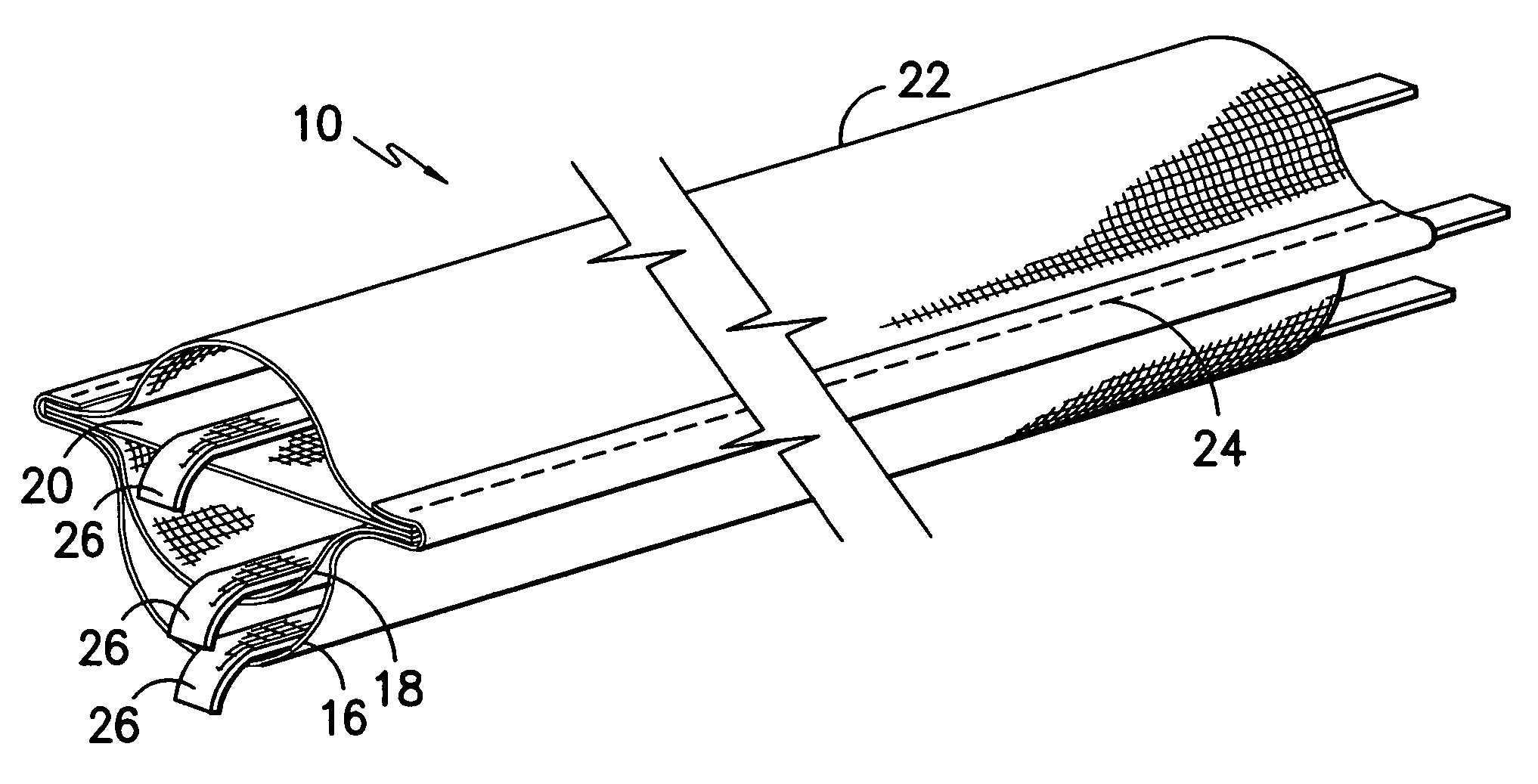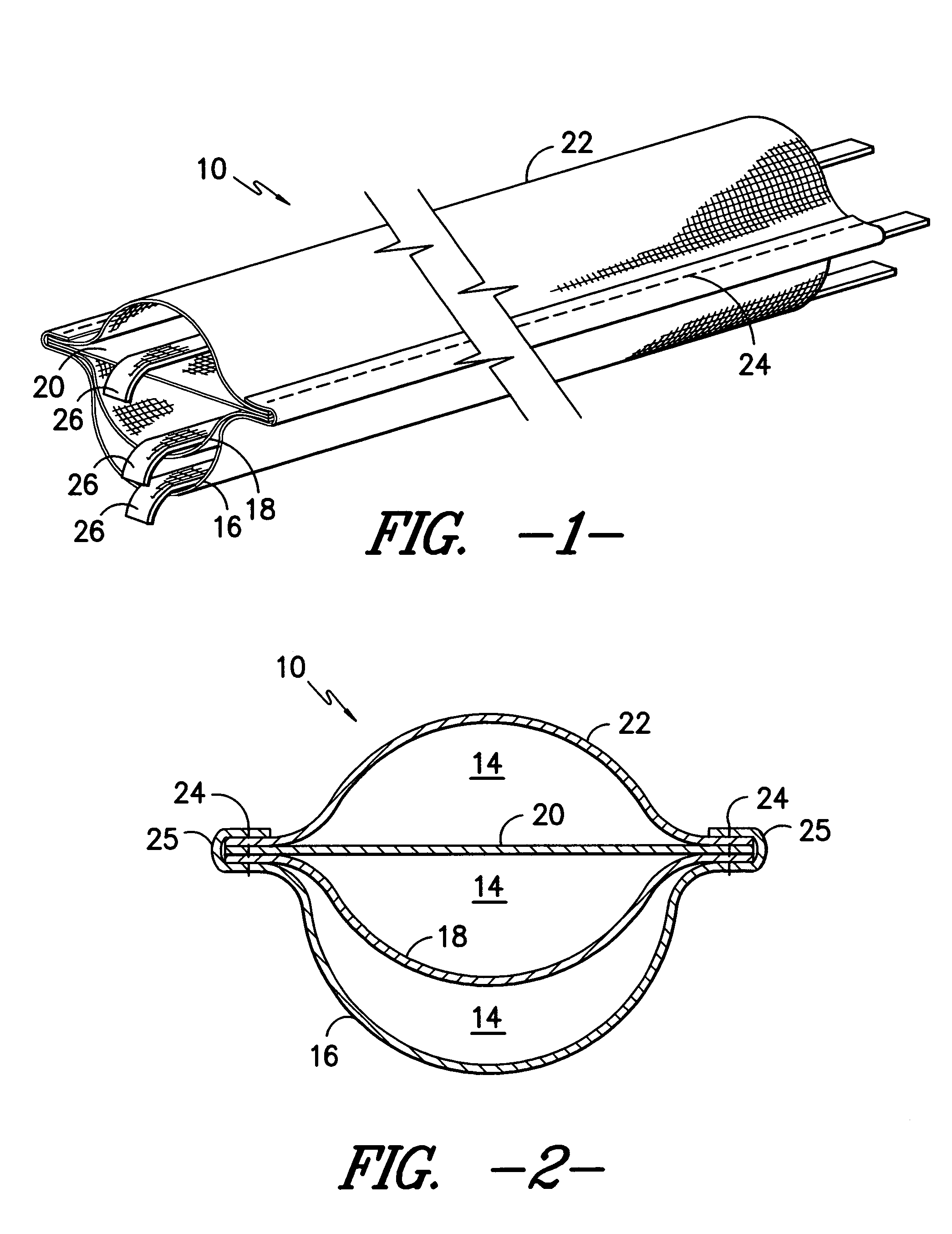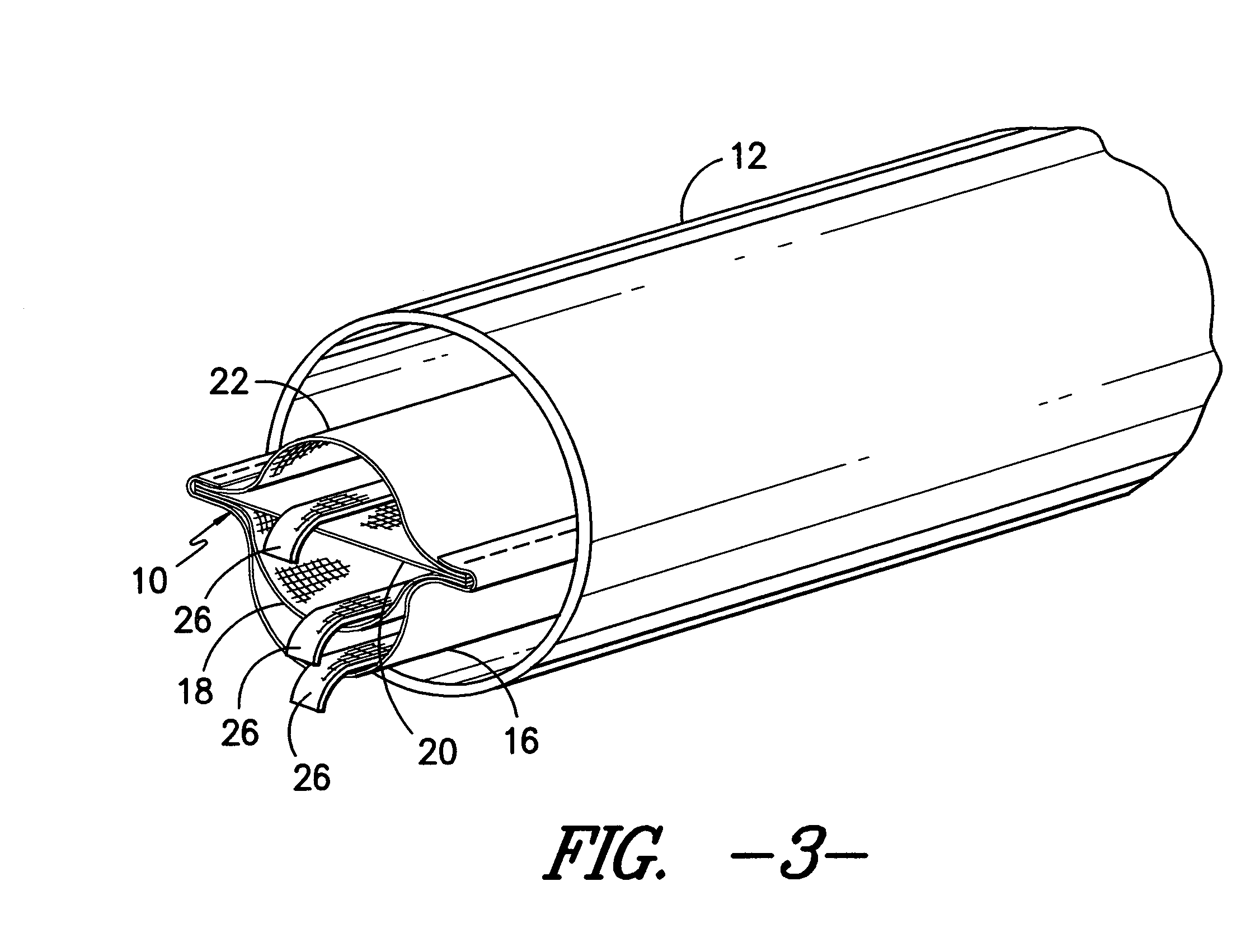Conduit insert for optical fiber cable
a technology of optical fiber cable and conduit, which is applied in the direction of cables, power cables, instruments, etc., can solve the problems of difficult to insert a second cable into a conduit which already contains a first cable, many unused or “dead” space within such a conduit, and the inability to insert the second cabl
- Summary
- Abstract
- Description
- Claims
- Application Information
AI Technical Summary
Benefits of technology
Problems solved by technology
Method used
Image
Examples
Embodiment Construction
[0020]Referring now to the drawings, the reference number 10 represents an insert, which may be referred to as an innerduct, to be inserted in an optical fiber cable conduit 12. As shown in FIG. 3, a single innerduct 10 is shown in a conduit 12, but it should be understood that multiple innerducts like the innerduct 10 can be inserted in a conduit 12 depending on the diameter of the conduit 12. For example, it is contemplated that three such innerducts can be inserted in a 4″ diameter conduit providing nine channels for the insertion of fiber optic cable.
[0021]Each innerduct 10 defines of a plurality of channels 14 which are formed by interconnected layers of fabric 16, 18, 20 and 22, etc. In the first embodiment of the invention each innerduct 10 has three channels 14 formed by the above noted layers 16, 18, 20 and 22 which are interconnected at their opposite longitudinal side edge portions by having the edge portions 25 of the lower layer 16 overlap the edge portions of the other...
PUM
| Property | Measurement | Unit |
|---|---|---|
| elongation percentage | aaaaa | aaaaa |
| elongation percentage | aaaaa | aaaaa |
| elongation percentage | aaaaa | aaaaa |
Abstract
Description
Claims
Application Information
 Login to View More
Login to View More - R&D
- Intellectual Property
- Life Sciences
- Materials
- Tech Scout
- Unparalleled Data Quality
- Higher Quality Content
- 60% Fewer Hallucinations
Browse by: Latest US Patents, China's latest patents, Technical Efficacy Thesaurus, Application Domain, Technology Topic, Popular Technical Reports.
© 2025 PatSnap. All rights reserved.Legal|Privacy policy|Modern Slavery Act Transparency Statement|Sitemap|About US| Contact US: help@patsnap.com



